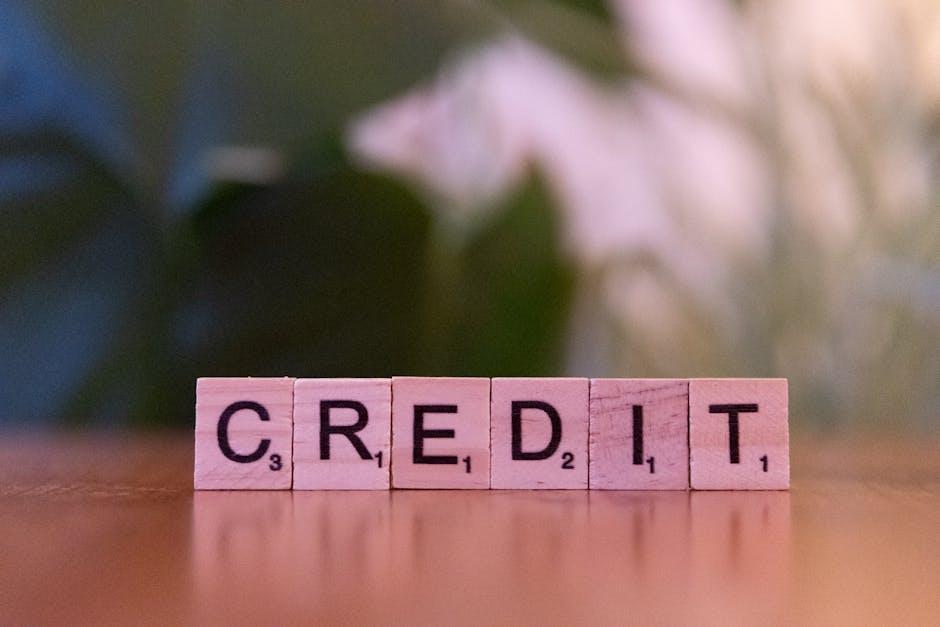In today’s fast-paced financial landscape, managing multiple credit card debts can feel overwhelming. The constant juggling of payment due dates, interest rates, and minimum balances often leads to confusion and stress. However, a solution exists that promises relief: credit card debt consolidation. Imagine simplifying your finances into a single, manageable payment without incurring extra fees. This article will guide you through mastering the art of debt consolidation, highlighting effective strategies that can help you regain control of your financial future. Whether you’re looking to reduce monthly payments or eliminate debt faster, understanding the nuances of zero-fee consolidation options can pave the way to a brighter, debt-free tomorrow.
Understanding the Fundamentals of Credit Card Debt Consolidation
Credit card debt consolidation can be a smart strategy for managing multiple credit card balances. Understanding how it works and its benefits can help you navigate your financial path more effectively. Here’s a breakdown of the fundamentals:
What is Credit Card Debt Consolidation?
Credit card debt consolidation involves combining several credit card debts into a single payment. This can often mean securing a lower interest rate and simplifying your monthly expenses.
Why Consider Consolidation?
- Lower Interest Rates: By consolidating, you can potentially secure a lower interest rate compared to what you’re currently paying on multiple cards.
- Single Monthly Payment: Instead of juggling multiple payments, consolidation lets you focus on a single monthly amount, making budgeting easier.
- Improved Credit Score: Responsible management of a consolidated loan can positively impact your credit score over time.
- Stress Reduction: Fewer bills and a clear plan can alleviate financial stress.
Methods of Consolidation
There are several ways to consolidate credit card debt:
- Balance Transfer Credit Cards: These allow you to transfer balances from high-interest cards to a new card, often with a 0% introductory APR for a limited time.
- Personal Loans: Consider securing a personal loan with a lower interest rate to pay off your credit cards.
- Debt Management Plan (DMP): Working with a credit counseling agency can help you enroll in a DMP, where they negotiate lower rates with creditors for you.
Evaluating Your Options
When considering credit card debt consolidation, examine the following:
| Method | Potential Benefits | Considerations |
|---|---|---|
| Balance Transfer | Low or no interest | May require good credit; fees apply |
| Personal Loan | Fixed rate and term | Must qualify; possible origination fees |
| Debt Management Plan | Professional negotiation | Creditors may close accounts; fees for service |
Tips for Successful Consolidation
- Understand Your Current Debt: Know how much you owe and compare interest rates.
- Shop Around: Look for the best rates and terms from various lenders before making a decision.
- Read the Fine Print: Be aware of fees associated with the consolidation method you choose.
- Commit to a Plan: Stick to your repayment plan to avoid falling back into debt.
By grasping the fundamentals of credit card debt consolidation, you can take control of your financial situation and work towards a debt-free future.
Exploring Zero Fee Strategies for Effective Debt Management
Managing debt effectively can often feel overwhelming, but implementing zero fee strategies can significantly ease the burden. By avoiding additional costs often associated with traditional debt consolidation methods, you can focus on paying down your debt more efficiently.
Utilizing 0% Introductory APR Offers
Many credit cards offer promotional periods featuring a 0% introductory APR on balance transfers. This means you can move your high-interest credit card debt to a new card without incurring interest during the promotional phase. Here’s what to consider:
- Look for cards with long introductory periods (12-18 months).
- Be aware of balance transfer fees; aim for cards that offer no fees.
- Plan to pay off the balance before the introductory period ends to avoid high interest rates afterwards.
Credit Union Membership Benefits
Credit unions often provide more favorable terms compared to traditional banks. They may offer:
- Lower interest rates on personal loans
- No fees for debt consolidation loans
- Flexible terms to meet your financial situation
Consider joining a credit union that you are eligible for, as they frequently prioritize member financial wellness.
Negotiating with Creditors
Don’t hesitate to directly contact your creditors to negotiate better terms for your debt. Here’s how:
- Explain your situation honestly; they may reduce your interest rate or forgive fees.
- Ask for a hardship plan; many creditors have programs for customers facing financial difficulties.
- Maintain an open line of communication; being proactive could prevent escalating fees.
Using a Debt Management Program
Some reputable nonprofit credit counseling agencies offer debt management programs (DMPs) with no fees. These can help you consolidate your payments into one monthly amount. Benefits include:
- Reduced interest rates negotiated on your behalf.
- Single monthly payment that simplifies your budget.
- Education on managing credit and finances to prevent future debt.
Table of Potential Savings
| Strategy | Potential Savings |
|---|---|
| 0% Introductory APR Balance Transfers | Up to 100% on interest charges for the duration |
| Credit Union Loans | Potential reductions of 1-5% in interest rates |
| Negotiated Interest Rate Reductions | 2-10% lower rates |
| Debt Management Programs | Typically 20-50% reduction in fees and interest |
By effectively leveraging these zero fee strategies, you can take significant steps towards regaining control over your finances, reducing stress, and ultimately achieving your debt-free goals.

Evaluating Different Consolidation Options for Your Financial Health
When considering ways to consolidate your credit card debt, it’s essential to understand the various options available, each with its unique benefits and challenges. Below are some of the most common consolidation methods:
- Balance Transfer Credit Cards: These cards allow you to transfer existing credit card balances to a new card, often with an introductory 0% APR for a limited time. This can save you money on interest, but be cautious of balance transfer fees and the APR that kicks in after the promotional period ends.
- Personal Loans: Taking out a personal loan from a bank or credit union can provide a lump sum to pay off your credit card debts. This option typically offers fixed interest rates and fixed repayment terms, which can simplify your monthly payments.
- Home Equity Loans: If you own a home and have built equity, you might consider leveraging it through a home equity loan. This generally offers lower interest rates compared to unsecured debt; however, it puts your home at risk if you fail to repay.
- Debt Management Plans: Working with a nonprofit credit counseling agency can help set up a Debt Management Plan (DMP). They negotiate with your creditors to lower interest rates and consolidate your payments into a single monthly payment.
- Debt Settlement: This approach involves negotiating with creditors to settle your debts for less than you owe. While it can significantly reduce your overall payment, it may severely impact your credit score and result in tax implications on forgiven debt.
| Option | Pros | Cons |
|---|---|---|
| Balance Transfer | Low interest, simplified payments | High fees, potential interest after promo |
| Personal Loans | Fixed rate and terms | Possible impact on credit score |
| Home Equity Loan | Lower interest rates | Risk of losing your home |
| Debt Management Plan | Lower interest rates, professional help | Nonprofits charge fees, not legally binding |
| Debt Settlement | Reduced total debt | Negative impact on credit score |
Don’t forget to evaluate your current financial situation and long-term goals before choosing a consolidation method. It’s crucial to pick an option that not only eases your current burden but also ensures a stable financial future.

Creating a Personalized Plan for Sustainable Debt Reduction
begins with understanding your unique financial situation. Here are key steps to help you tailor your plan effectively:
- Assess Your Current Debt: List all your debts, including credit cards, loans, and any other obligations. Note the interest rates, minimum payments, and due dates.
- Set Clear Goals: Define what you want to achieve-whether it’s paying off a specific debt or eliminating all high-interest card balances.
- Choose the Right Approach: Consider different debt reduction strategies, such as the snowball method (paying off the smallest debts first) or the avalanche method (tackling the highest interest debts first).
- Create a Budget: Track your income and expenses to identify areas where you can cut back. Allocate your savings towards your debt repayment.
- Explore Consolidation Options: Look into options like balance transfer credit cards or personal loans with low interest rates to consolidate your high-interest debts.
Make sure to work with reputable financial institutions. Here is a simple table to help you compare potential consolidation options:
| Bank/Provider | Type of Consolidation | Interest Rate | Duration | Fees |
|---|---|---|---|---|
| Chase Bank | Personal Loan | 6.99% – 24.99% | 3 – 5 years | No Fees |
| Bank of America | Balance Transfer Card | 0% for 12-18 months | N/A | 3% Transfer Fee |
| Discover | Personal Loan | 6.99% – 24.99% | 3 – 7 years | No Fees |
Regularly monitor your progress. Update your budget and plan accordingly as you pay down debts. This adaptability will position you for lasting financial health.

Closing Remarks
In conclusion, mastering credit card debt consolidation with zero fees is not only a practical approach but a transformative step towards financial stability. By carefully evaluating options-whether through negotiating with creditors, utilizing balance transfer cards, or choosing consolidation loans with favorable terms-you can empower yourself to take control of your financial future. Remember, the key is to assess your unique situation and select the strategy that aligns with your goals. With diligent planning and informed decision-making, you can pave the way to a debt-free life, embracing the freedom and peace of mind that comes with financial wellness. Here’s to taking that first step towards mastering your credit card debt-your journey begins today.














